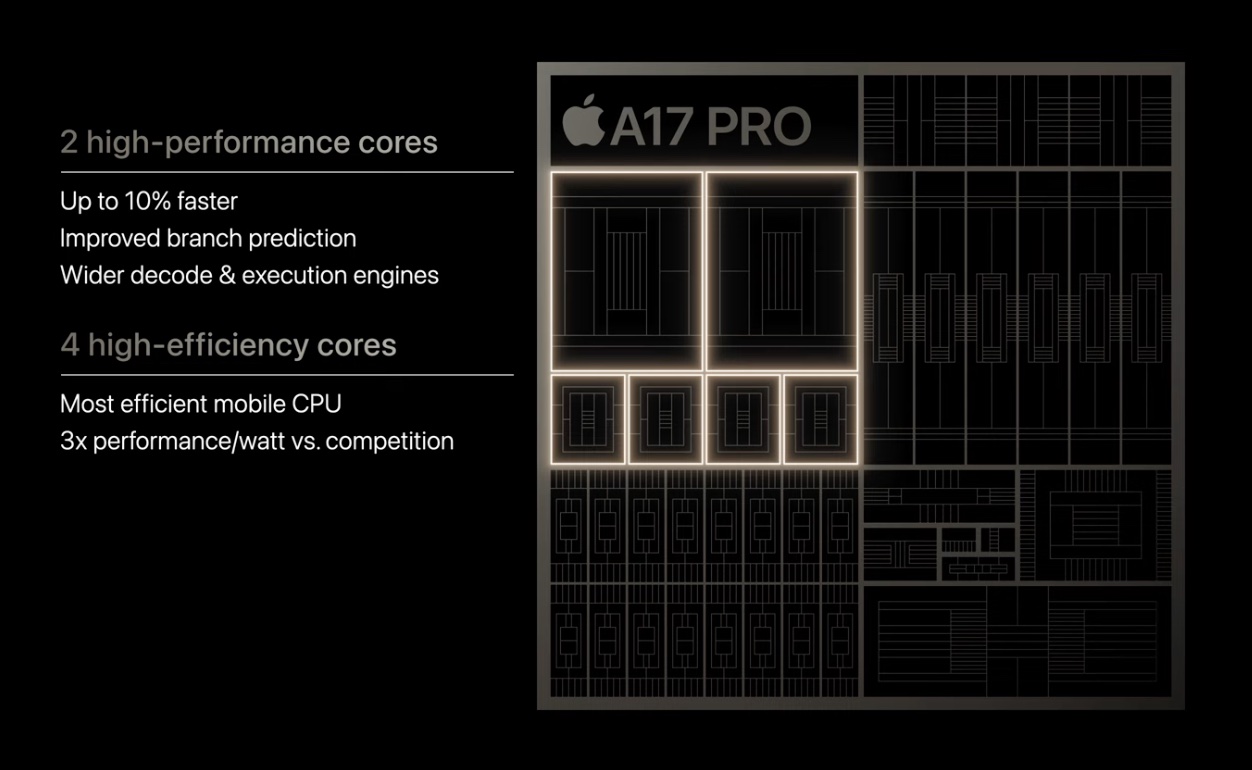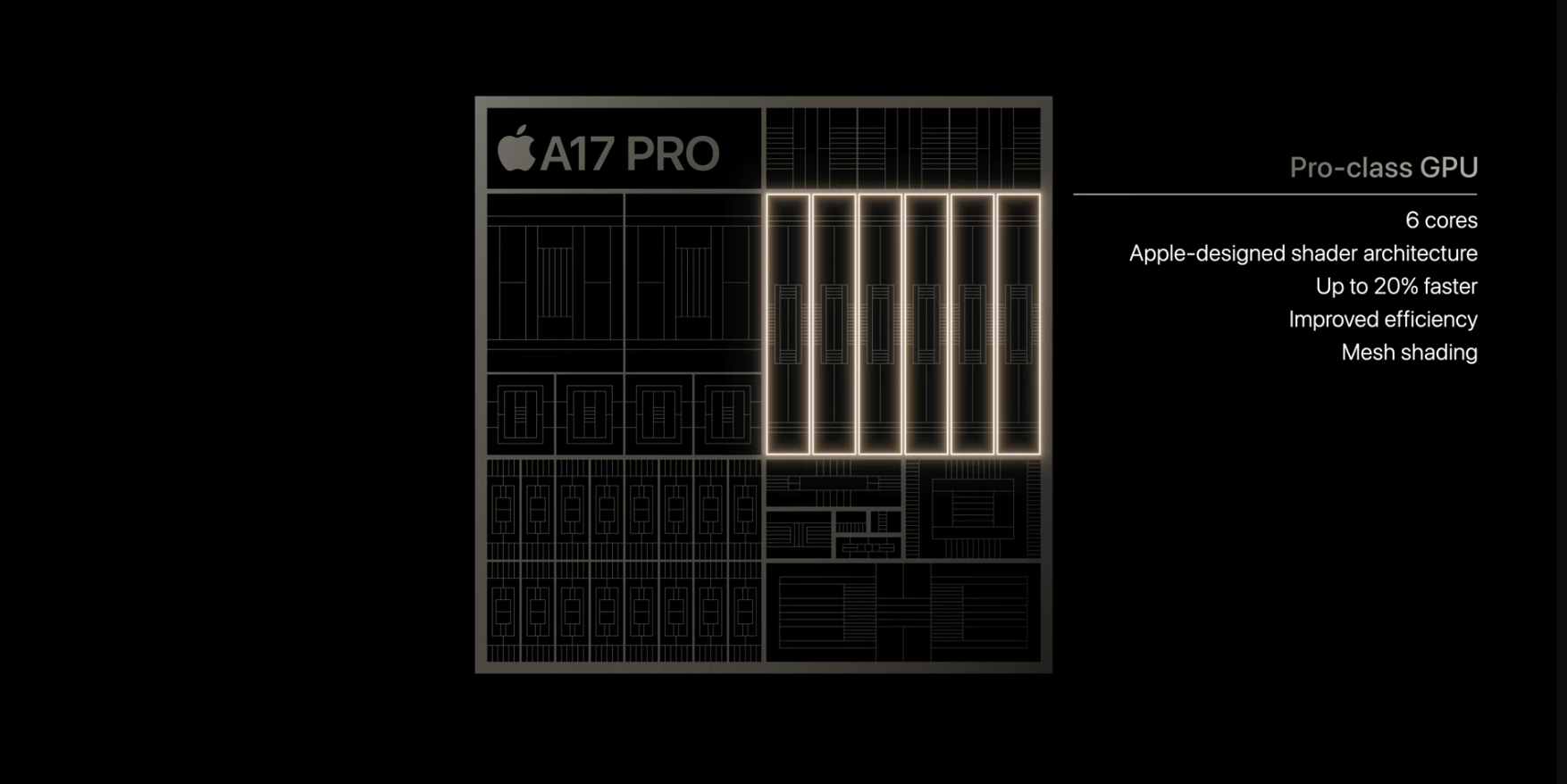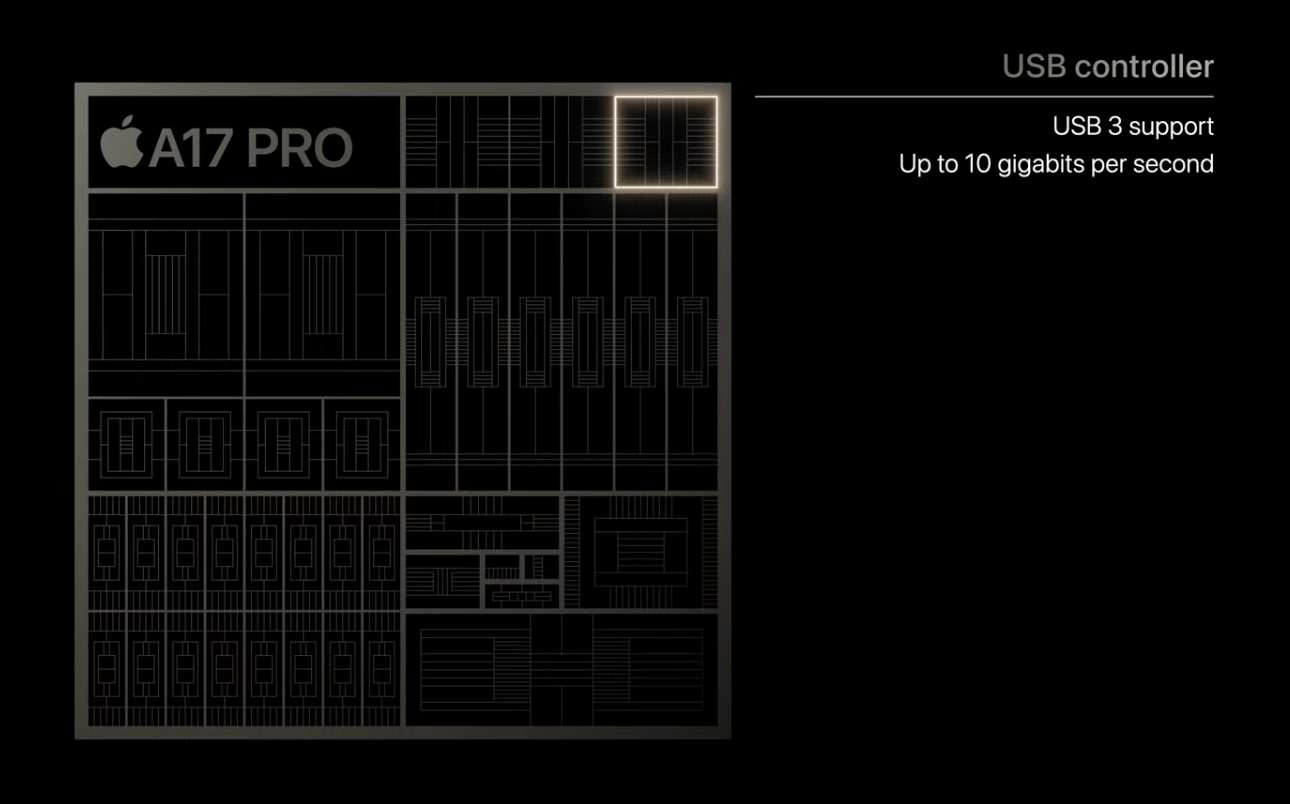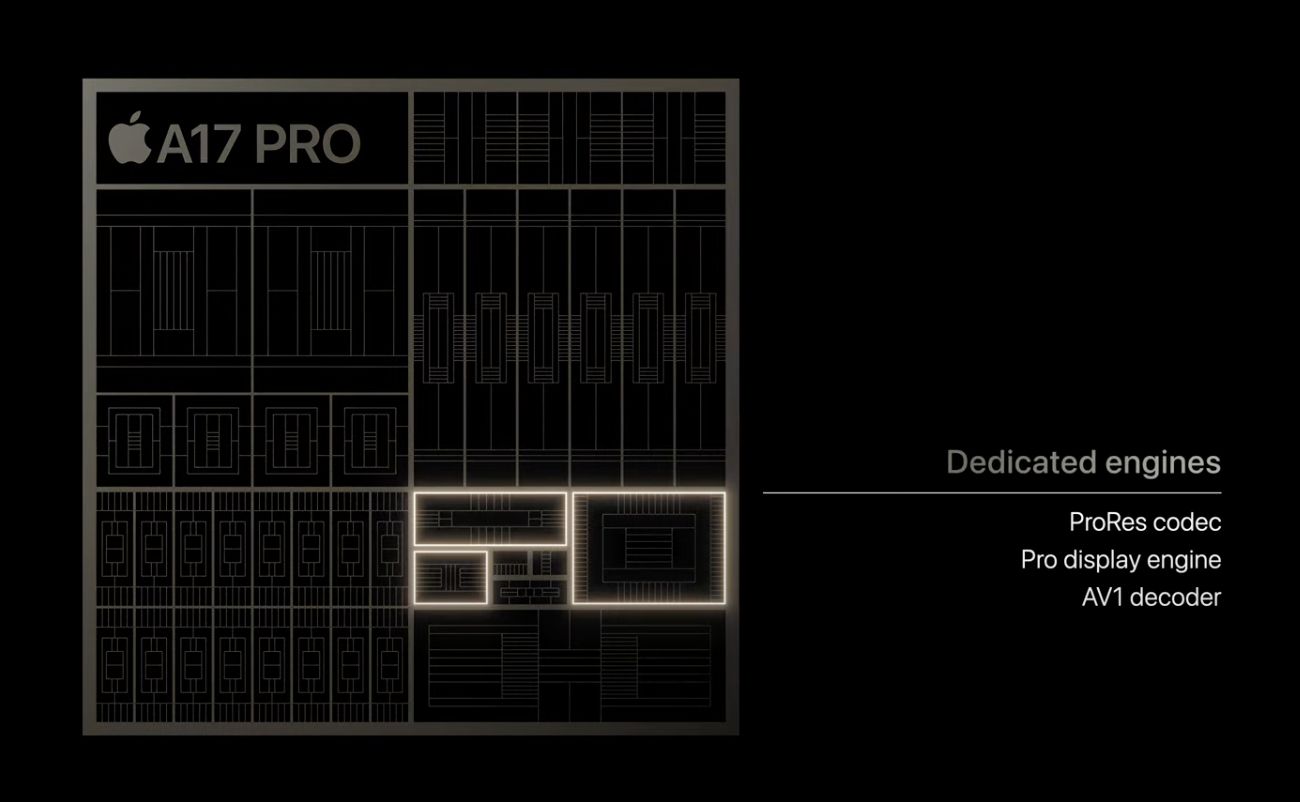
Apple’s most powerful smartphone chip is the A17 Pro. But how much different is it compared to the A16 Bionic for speed, efficiency, and capabilities? Read along for an in-depth A17 Pro vs A16 Bionic comparison.
The A17 Pro – as the name alludes – is exclusive to the iPhone 15 Pro and Pro Max while the iPhone 15 and 15 Plus use the A16 Bionic. Below we’ll focus specifically on the Apple Silicon similarities and differences but we’ve also got a complete comparison between the iPhone 15 devices:
Table of contents
A17 Pro vs A16 Bionic

Hardware specs
The A17 Pro is what Apple says is “the industry’s first 3-nanometer chip.” It features 6 CPU cores like the A16 Bionic but they’re faster and more capable thanks to micro-architectural and design improvements.
Apple says the A17 Pro offers “the fastest single-threaded performance in any smartphone.”
The GPU includes an extra core going from 5 to 6 with several upgrades and capabilities. And while the Neural Engine remains with 16 cores, it is now twice as fast as the Neural Engine in the A16.
| A17 Pro | A16 Bionic | |
| CPU | 6-core | 6-core |
| GPU | 6-core | 5-core |
| Neural Engine | 16-core, up to 35 trillion operations per second | 16-core, up to 17 trillion operations per second |
| Memory | 8GB | 6GB |
| Transistors | 19 billion | 16 billion |
| Chip design process | 3nm | 4nm |
CPU benchmark scores
Apple says the CPU performance cores of the A17 Pro are up to 10% faster than the A16 Bionic and with the first Geekbench results available, the measured performance improvement is even better.
For single-core performance, the A17 Pro was roughly 16% faster than the A16. For multi-core, it performed ~13% faster.
| A17 Pro | A16 Bionic | A15 Bionic | |
| Single-core score | 2914 | 2519 | 2183 |
| Multi-core score | 7199 | 6367 | 5144 |
The A17 Pro even benchmarked above the M1 for single-core performance – but was below Apple’s base desktop chip for multi-core performance.

CPU efficiency
- Apple didn’t share an efficiency comparison between the A17 Pro and A16 so that may not have changed much or at all
- However, it’s still impressive how little power it sips, Apple says A17 Pro is the “most efficient mobile CPU” and offers 3x better performance per watt than the “competition” with its efficiency cores
Memory
At 8GB, A17 Pro gets a 2GB increase in RAM from the 6GB found with the A16 Bionic.
That should help offer an even faster and smoother experience launching/switching apps. While Android smartphones continue to have more RAM than iPhones, Apple typically outperforms them with less as it’s able to fine-tune its iPhone hardware and iOS software.
A17 Pro vs A16 GPU performance

The GPU with the A17 Pro gets an even bigger improvement over the A16 Bionic with a focus on 3 aspects:
- Performance and efficiency
- Complex applications
- New rendering features
Speed
Apple labels the GPU “pro class” and says the new 6-core design offers 20% faster graphics performance than A16. And it remains efficient for extended gaming sessions thanks to features like mesh shading.
Hardware-based ray tracing
Another big change with the A17 Pro GPU is hardware-accelerated ray tracing. Apple says that offers much smoother graphics at higher frame rates. That’s 4x faster ray tracing than with A16 Bionic.
To highlight the capabilities, developers like CAPCOM say the new A17 Pro GPU has enabled console-quality games like Resident Evil 4 and Resident Evil Village to launch on iPhone (coming soon).
We don’t have any real-world tests for the A17 GPU, but we’ll update this post when we learn more.
USB 3

Another feature that Apple says is made possible by the A17 Pro chip is USB 3 performance via the new USB-C port on the iPhone 15 Pro.
That’s 10Gbps transfer speeds (USB 3.2 Gen 2), 20x faster compared to the 480Mbps speeds of the USB-C port on the iPhone 15 with A16 Bionic. That 480Mbps performance is the same as Lightning on iPhone 14 and earlier.
Interestingly, the iPad mini with A15 chip has USB 3.1 for 5Gbps speeds – much faster than the iPhone 15 and A16 chip – so it seems the latter’s limit could be artificial.
Media engines

Joining the dedicated ProRes codec and Pro display engine this year with A17 Pro is an AV1 decoder. Apple says that should improve the video streaming experience on iPhone 15 Pro.
A17 Pro vs A16 Bionic wrap-up
At first glance, the improvements with the A17 Pro over the A16 might not seem that big, but when taken together, they make up the world’s most powerful and efficient mobile chip – with notable improvements in graphics and neural engine performance.
Whether or not most people need the world’s most powerful smartphone chip is another question, but for those who want the best, the A17 Pro is it.
What are you able to do with the A17 Pro? Or did you stick with the A16 or earlier? Share your thoughts in the comments!
Thanks for reading our guide on the A17 Pro vs A16 Bionic!
Top image by 9to5Mac, all other images via Apple
FTC: We use income earning auto affiliate links. More.






Comments